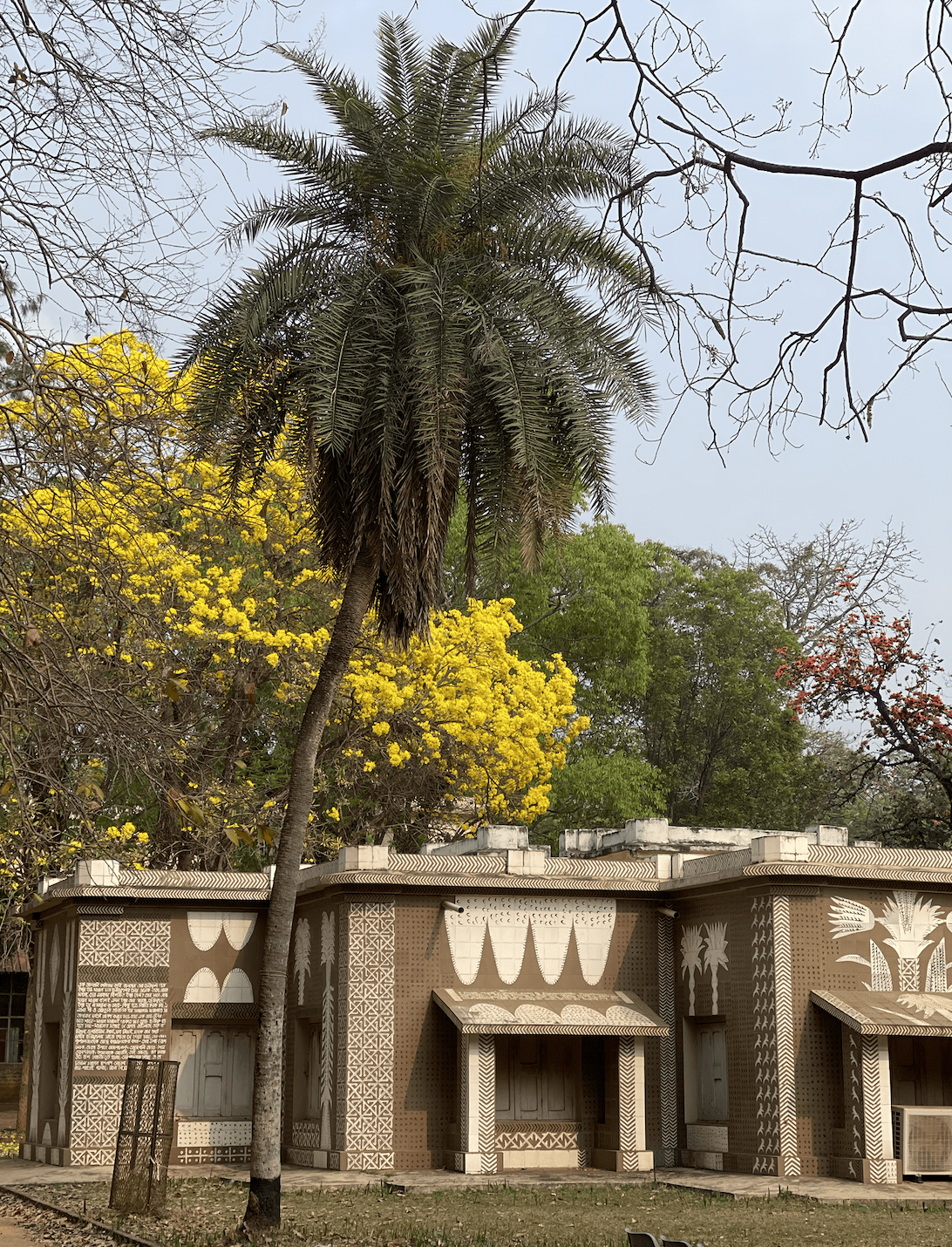 Yuva Hindi Sansthan and the South Asian Language Programs at New York University (NYU) partnered to run this Fulbright Hays Short Term Curriculum Development Program 2023-2024. It is supported by Hindi language teaching faculty from the University of Texas at Austin, Michigan State University and Yale University. In India YHS is supported by Arsh Vidya Gurukul, Rishikesh; Benares Hindu University Department of Hindi, Varanasi; Center for Higher Tibetan Studies, Sarnath-Varanasi; University of Lucknow; Swami Vivekananda University School of Humanities and Social Sciences, Barrackpore, Kolkata, West Bengal; and Acharya Sukumar Sen Mahavidyalaya, Gotan, West Bengal.
Yuva Hindi Sansthan and the South Asian Language Programs at New York University (NYU) partnered to run this Fulbright Hays Short Term Curriculum Development Program 2023-2024. It is supported by Hindi language teaching faculty from the University of Texas at Austin, Michigan State University and Yale University. In India YHS is supported by Arsh Vidya Gurukul, Rishikesh; Benares Hindu University Department of Hindi, Varanasi; Center for Higher Tibetan Studies, Sarnath-Varanasi; University of Lucknow; Swami Vivekananda University School of Humanities and Social Sciences, Barrackpore, Kolkata, West Bengal; and Acharya Sukumar Sen Mahavidyalaya, Gotan, West Bengal.
The participants are trained as future educators who could offer competently non-biased and balanced content to provide opportunities for civic engagement and global learning to the Hindi language learners in the U.S. They research and develop new teaching materials integrating language, culture and multi-disciplinary content. The final products, curricular materials, are shared here with educators and K-12 learners in the USA.
There has been a notable demand across U.S. university and school campuses for courses or curricular units on mindfulness and wellness to address needs of students and faculty related to their holistic health, identity formation as well as personal and professional growth. In the last few decades, research has demonstrated that the well-being of students and a positive education approach serve as a pathway to increased life satisfaction, promote learning and creativity, enhance social cohesion, and promote civic citizenship (Kern et al., 2014). In addition, teachers’ well-being is an overlooked aspect of their professional development and personal growth (Kaur and Singh, 2019).
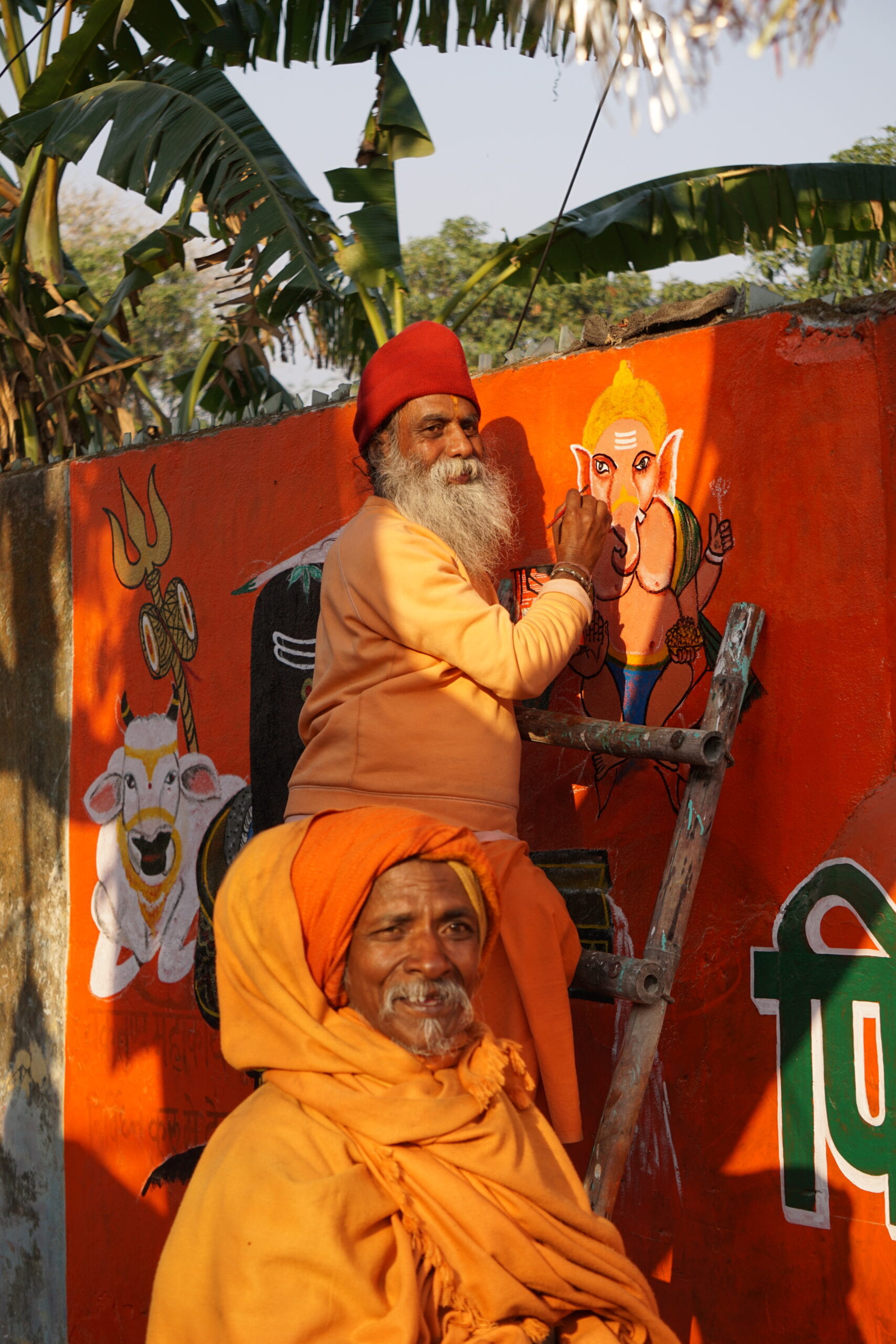
We use ‘mindfulness’ and ‘wellness’ as household words, standing for inner peace, balance and positivity. The concepts of mindfulness and wellness have gradually emerged as dominant lifestyle constructs which are believed to have derived from Indian philosophical traditions and practices, more specifically Buddhist, Jain and Upanishadic thought, rituals and practices. In addition, the Western world, and the U.S. in particular, has embraced yoga and meditation practices which have also originated in India. Yet, although the Indian philosophical traditions about mindful living and their practical implications leading to well-being are recognized and valued globally, both in the Western and the Eastern world, they are not consistently studied and explored throughout the Hindi and South Asian Studies curricula. Although the language textbooks cover a range of Indian cultural information (products, practices and perspectives) along with grammar structures and practice tasks, they lack emphasis on the rich spiritual traditions of mindful living among the diverse communities of India as a content area. In addition there are not many cross discipline courses exploring this topic. The proposed project addresses this deficiency. In addition, it will promote well-being for the entire classroom, allowing academics of all disciplines and backgrounds to benefit from a deeper understanding of Indian mindfulness. An added outcome is that the instructional materials which are designed will help relieve stress and burnout among the teacher population. 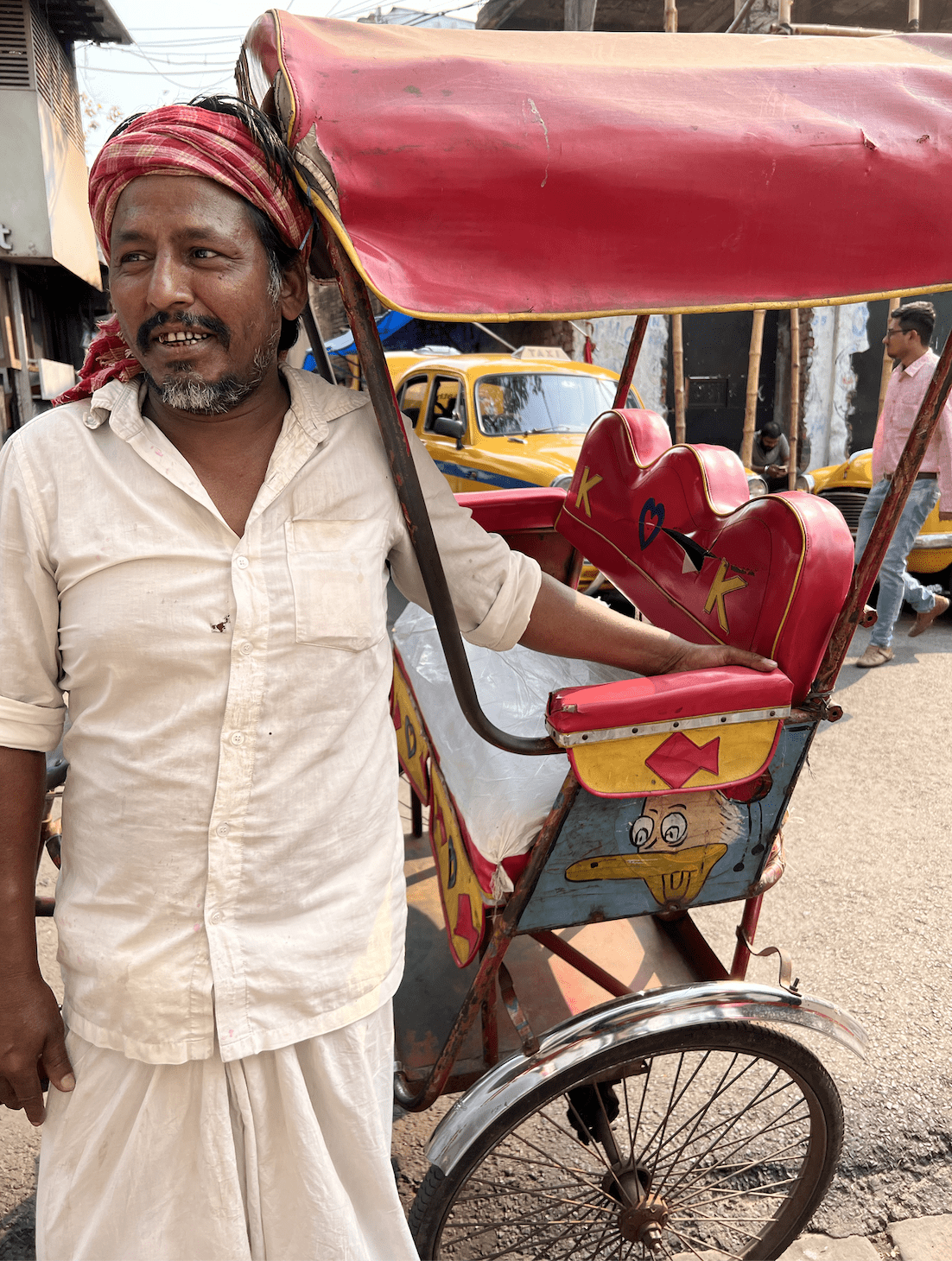
Mindfulness is considered here a basic human capacity for self-regulation of awareness towards present mental states and processes, and it involves a non-evaluative openness and acceptance occurring at variable levels and it can be trained by various practices (Brown, Ryan, & Creswell, 2007; Kabat-Zinn, 2003, Bishop et al., 2004). Mindfulness and wellness go hand in hand because mindfulness is associated with well-being and positivity (Brown & Ryan, 2003; Carlson & Brown, 2005). Wellness generally refers to the active pursuit of activities, choices and lifestyles that lead toward an outcome of optimal inner balance and holistic health. Wellness is associated with an active process of being aware and making choices that lead to mindfulness. It has also been suggested that being mindful increases the possibility of self-controlling behavior and making behavioral decisions that lead to increased well-being and goal attainment, directly relevant to curricular as well as students’ and teachers’ needs (Brown et al., 2007). Hence, the scope of the project is to explore how members of various Indian communities (urban or rural settings, in the arts and crafts or religious institutions) think or talk about mindful living, on one hand, and on the other exercise mindful living, ideas and behaviors rooted in ancient traditions and textual sources. The objective to introduce new theme-based learning materials about mindful lifestyles and wellness ideas traditionally practiced in India. The program participants collect information, record individual and community insights about practices and perspectives related to contentment, mindful lifestyles and wellness in order to develop instructional materials and thus expand existing curricula. The goal is to create an instructional platform that will support the teaching of traditional mindful practices and perspectives more consistently and more cohesively in the Hindi and South Asian Studies classrooms in the U.S., based on focused information and well designed instructional materials. Such materials are insufficient so far in the U.S. educational settings, including colleges, schools and community schools. The program participants learn from lectures and selected readings of primary and secondary resources, they make observations and discuss with local native speakers common practices and perspectives related to the different dimensions of mindfulness and wellness. Included are (a) physical, (b) economic, (c) social, (d) emotional, (e) psychological, (f) environmental well-being, (g) life- and domain-specific contentment. Our initial research demonstrates that contentment is an important component of mindfulness, which has a unique local dimension. For the purpose to make the project initially implementable and to be able to unpack the theme, we will consider contentment as a cornerstone concept. In addition, we will explore several other concepts and cultural factors which we will explain later, such as certain contextually defined language functions and uses, the idea of home and family, identity, arts, etc.
The linguistic aspect or how language reflects these ideas is also in the scope of the program and is examined by the participants. On the one hand, the focus is on what is frequently used at the lexical level in authentic situations. An intriguing example is the popular use of the word शांति (‘peace’) in various ritualistic, meditative or celebratory contexts. The word has a rich meaning encompassing ‘inner state of calm and focus’, ‘mental balance between body, mind and soul’, ‘withdrawal of the senses’. It stems from the शांति मार्ग idea or ‘the path of shanti’ and it is apparent that this concept has a more limited use in the West.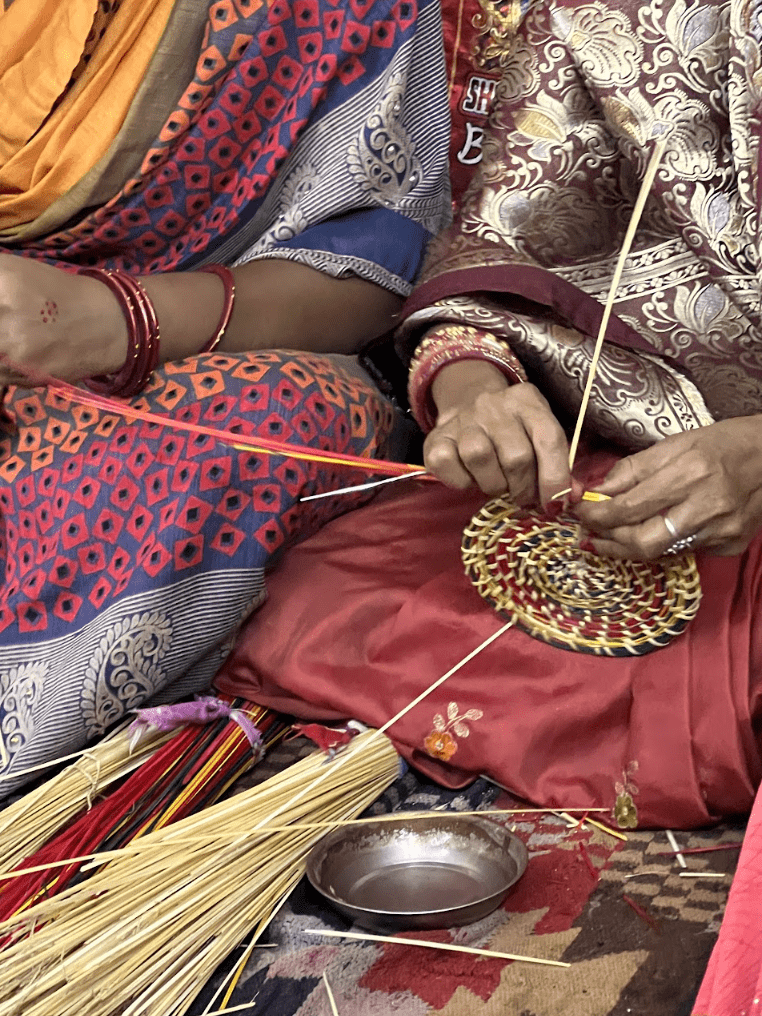
Similarly, commonly used are:
- मंगल ( wellness) — used in temples and in ritualistic setting
- कल्याण (prosperity, well-being ) — used in temples and in ritualistic setting, but also the title Ministry of Health and Family Well-being
The participants discover that the members of the community express to each other specific wishes on special occasions by using these lexemes. They explore wishes as a function, as speech acts (written or oral) which encode speakers’ attitudes and beliefs related to the main topic of the project – wellness and mindfulness. An example is the consistent use of ‘तुम्हारा कल्याण हो’ or ‘तुम्हारी (यात्रा/ शादी) मंगलमय हो!’ for a safe trip, for a happy wedding, as a blessing in the temple, etc. is literally translated as ‘let your prosperity be’ ‘or let your … be fortunate’). They describe it as wellness or prosperity beyond the material world-based gainings, in a holistic way, it also implies physical and mental, individual and family wellbeing, and even joy.
On the other hand, examples of what is frequently used in English and less in Hindi are the words for ‘spirituality’ or ‘mindfulness’ in Hindi. For instance, the participants explore the meaning that diverse communities construct in various concepts related to the theme and how they exercise them, such are:
- आध्यात्मिकता (spirituality) — used by academics and it seems to be a relatively new word not found in ancient texts (possibly because of English impact)
- जागरूकता (awareness) — used sporadically by swamis and swaminis in Rishikesh
- सचेतनता (mindfulness) — used on just a few occasions by speakers in Kolkata
Another direction of exploration is wishes as a function. Very interesting is the popularly used expression ‘be happy’, which is usually translated with ‘khush raho’ (ख़ुश रहो) with the actual meaning ‘ be joyful’, because the Western world has a rich idea of happiness. Therefore, we refrain from using the word ‘happiness’ since traditionally its origin as a concept is considered European and it is not central in Indian intellectual discussions.
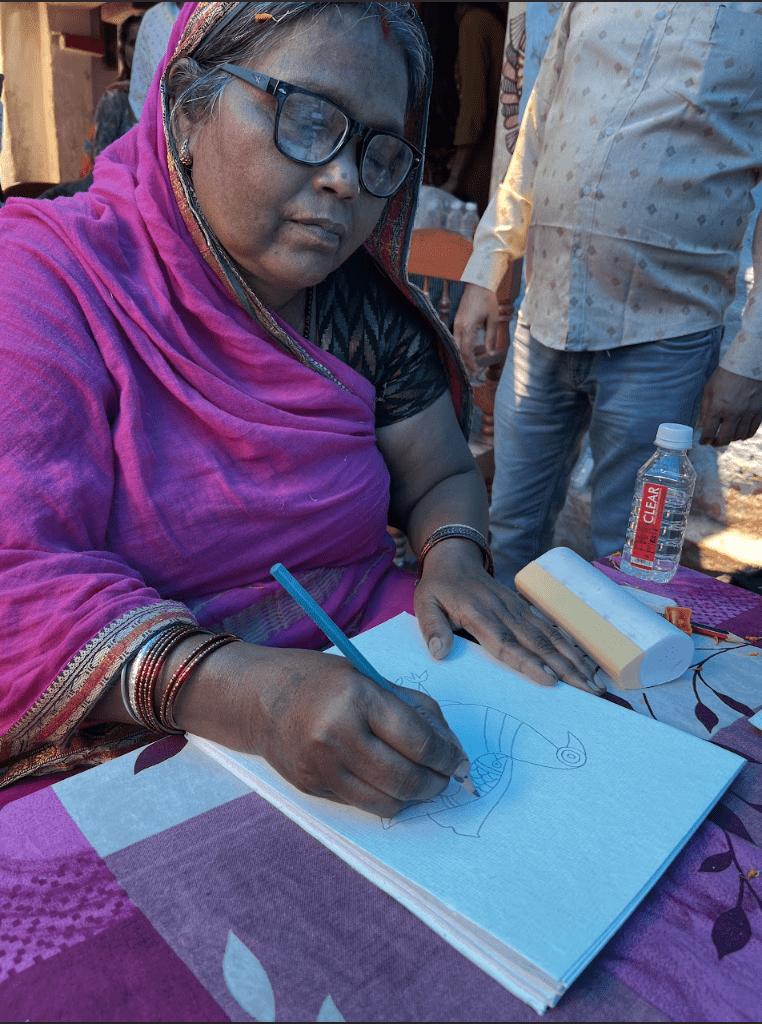
To be culturally sensitive and appropriate we use the idea of संतोष (contentment) which has roots in Indian philosophies and is a way of thinking, It is commonly used by various communities both by priests, religious leaders, gurus and ordinary people. संतोष (contentment) is used by all communities with similar connotation related to a more permanent state of mind rather than a momentous state of ind because of outside circumstances.
The program participants take part in several artistic activities both on the reception and production end (program statement about wellness and art). They communicate with diverse communities vis-a-vis region, religion, age, occupation, sex, education, class, etc. They record different mindfulness practices and traditions, such as morning and evening rituals, meditation, making or enjoying arts or crafts (including poetry, visual art, music, singing, dance, fabric or basket weaving, etc. ) and purposeful interaction with nature. The collected interviews, videos and photos are used for curricular document design.
View for more information the project overview by the Program Director, Ashok Ojha.